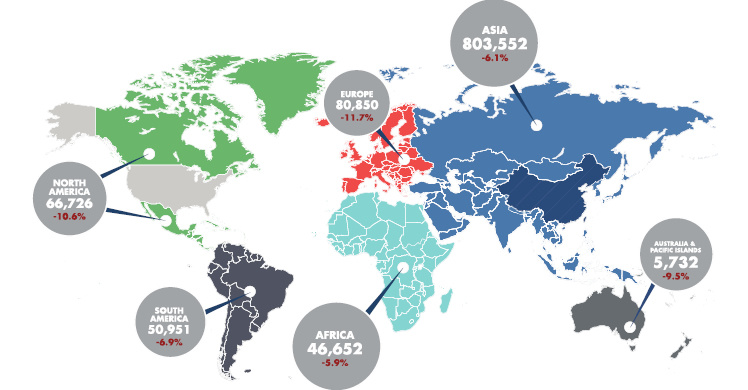Archived Content
In an effort to keep ICE.gov current, the archive contains content from a previous administration or is otherwise outdated. This information is archived and not reflective of current practice.
SEVP releases quarterly report on international students studying in US
WASHINGTON – “SEVIS by the Numbers,” a quarterly report on international students studying in the United States, was released Thursday, Sept. 3 by the Student and Exchange Visitor Program (SEVP), part of U.S. Immigration and Customs Enforcement’s (ICE) Homeland Security Investigations (HSI). The report contains the latest data from the Student and Exchange Visitor Information System (SEVIS), a Web-based system that includes information about international students, exchange visitors and their dependents while they are in the United States.
Based on data extracted from SEVIS July 7, there are more than one million international students, using an F (academic) or M (vocational) visa, enrolled at nearly 9,000 U.S. schools. This marked a nine percent increase when compared to July 2014 data.
Seventy-six percent of all international students were from Asia. The top 10 countries of citizenship for international students included: China, India, South Korea, Saudi Arabia, Canada, Japan, Taiwan, Vietnam, Mexico and Brazil.
India and Vietnam had the greatest percentage increase in students studying in the United States at 31.9 and 25.9 percent, respectively, when compared to statistics extracted from SEVIS July 2014. The University of Southern California, New York University, Columbia University, the University of Illinois and Purdue University ranked one through five among U.S. schools with the most international students.
More than 400,000 international students pursued STEM (science, technology, engineering and mathematics) coursework in July 2015, an increase of nearly 17.7 percent from July 2014 data (more than 60,000). Sixty-six percent of international students studying STEM fields were male. Eighty-six percent of international students studying STEM coursework were from Asia. More international students studied engineering than any other STEM field of study, with 29 percent of those engineering students coming from India.
The July report includes a special section about international students studying at schools in California, New York and Texas. As of July 7, 36 percent of all international students were studying at schools in one of these three states.
Other key points from the report include: 77 percent of SEVP-certified schools had between zero and 50 international students; 74 percent of international students were enrolled in bachelor’s, master’s or doctoral programs; and California, New York and Florida had the most SEVP-certified schools. A school must be SEVP-certified before it can enroll international students.
Report data was extracted from SEVIS July 7. It provides a point in time snapshot of data related to international students studying in the United States. Data for the previous “SEVIS by the Numbers” was extracted from SEVIS February 6.
SEVP monitors approximately one million international students pursuing academic or vocational studies (F and M visa holders) in the United States and their dependents. It also certifies schools and programs that enroll these students. The U.S. Department of State monitors exchange visitors (J visa holders) and their dependents, and oversees exchange visitor programs.
Both use SEVIS to protect national security by ensuring that students, visitors and schools comply with U.S. laws. SEVP also collects and shares SEVIS information with government partners, including U.S. Customs and Border Protection and U.S. Citizenship and Immigration Services, so only legitimate international students and exchange visitors gain entry into the United States.
HSI reviews potential SEVIS records for potential violations and refers cases with potential national security or public safety concerns to its field offices for further investigation. Additionally, SEVP’s Analysis and Operations Center reviews student and school records for administrative compliance with federal regulations related to studying in the United States.


